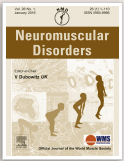 Here, researchers from the Institute of Myology have focused on walking difficulties and balance problems in a population of 22 adults affected in DM1, with an average age of 42 years, was compared to a matched group of similar age. The study evaluated gait using lower-trunk accelerometry and investigated relationships between gait abnormalities, postural instability, handgrip myotonia, and weakness in lower-limb and axial muscle groups commonly affected in myotonic dystrophy type 1 (DM1).
Here, researchers from the Institute of Myology have focused on walking difficulties and balance problems in a population of 22 adults affected in DM1, with an average age of 42 years, was compared to a matched group of similar age. The study evaluated gait using lower-trunk accelerometry and investigated relationships between gait abnormalities, postural instability, handgrip myotonia, and weakness in lower-limb and axial muscle groups commonly affected in myotonic dystrophy type 1 (DM1).
Gait analysis using lower-trunk accelerometry was performed at self-selected walking pace. Postural stability was measured via center of pressure displacement analysis using a force platform during eyes-closed normal stance. Handgrip myotonia was quantified using force-relaxation curve modeling. Patients displayed lower walking speed, stride frequency, stride length, gait regularity, and gait symmetry. Strength of ankle plantar flexors, ankle dorsal flexors and neck flexors correlated with interstride regularity in the vertical direction. Knee extension strength correlated with gait symmetry in the anteroposterior direction. Center of pressure velocity was greater in patients and correlated with neck flexion and ankle plantar flexion weakness, and with interstride regularity in the vertical direction. No correlation was found between handgrip myotonia and any other variable studied. Lower-trunk accelerometry allows the characterization of gait pattern abnormalities in patients with DM1. Further studies are required to determine the relevance of systematic gait analysis using lower-trunk accelerometry for patient follow-up and intervention planning.
